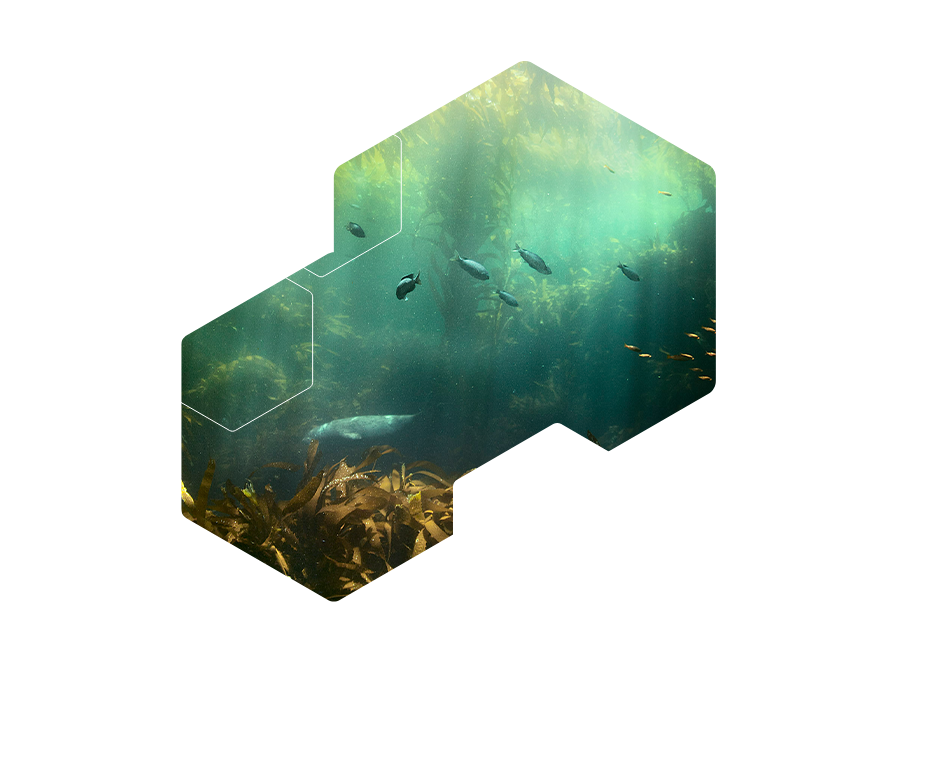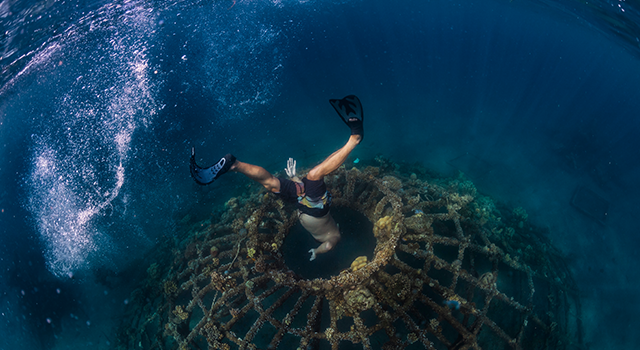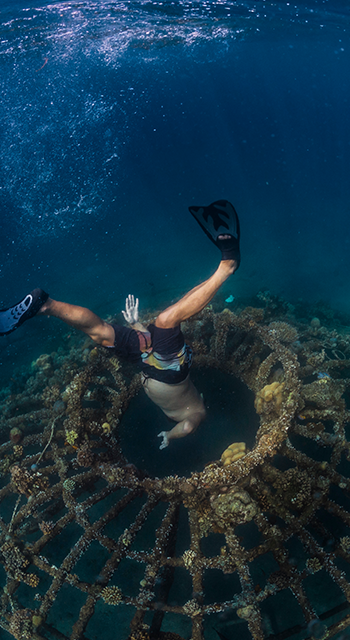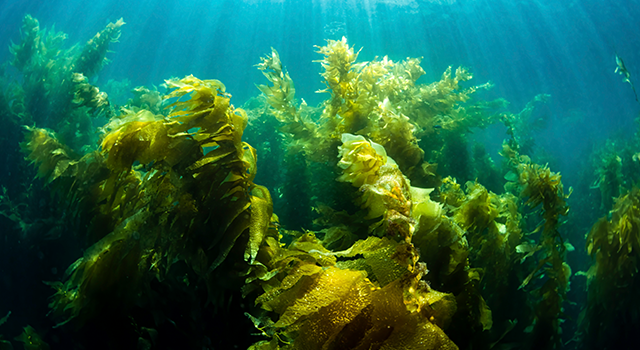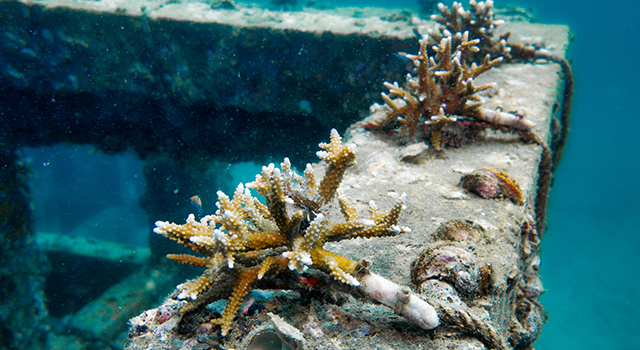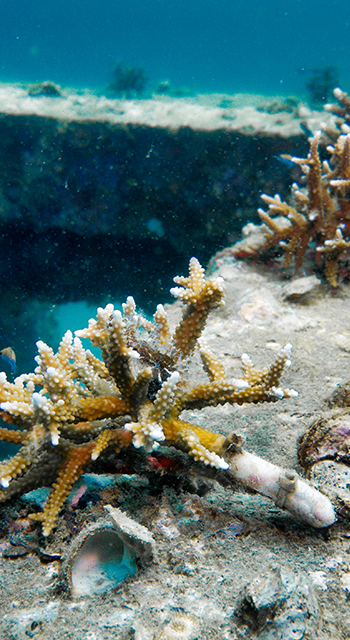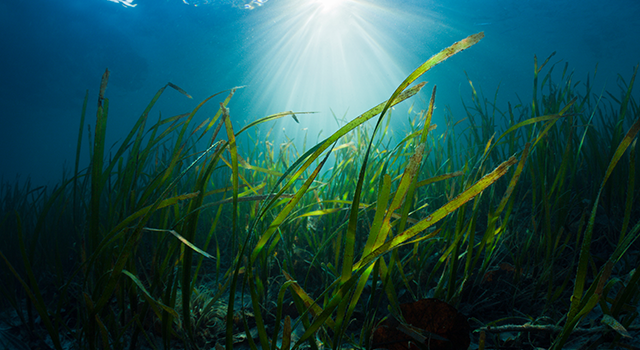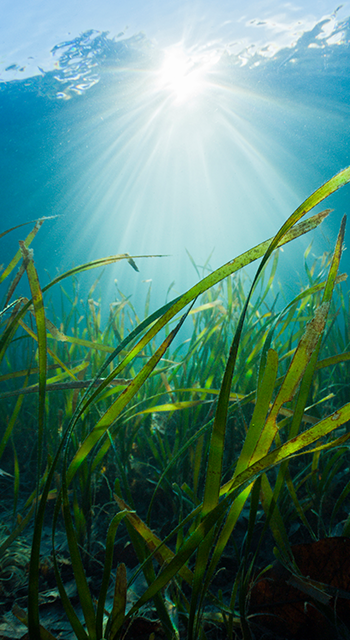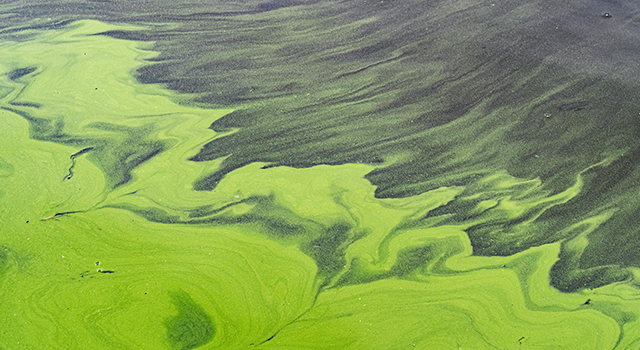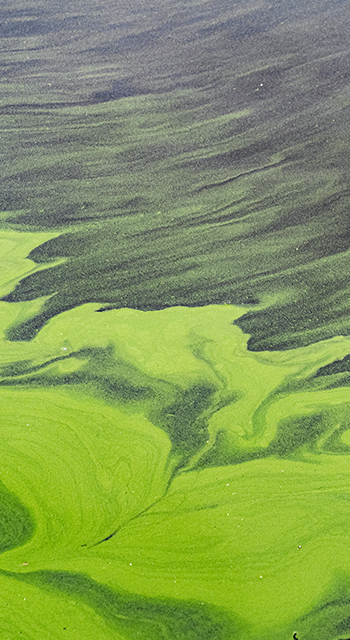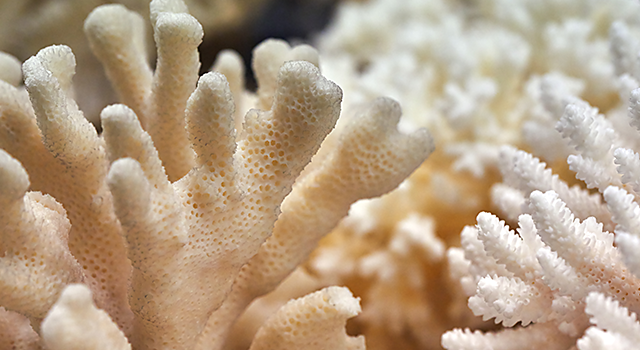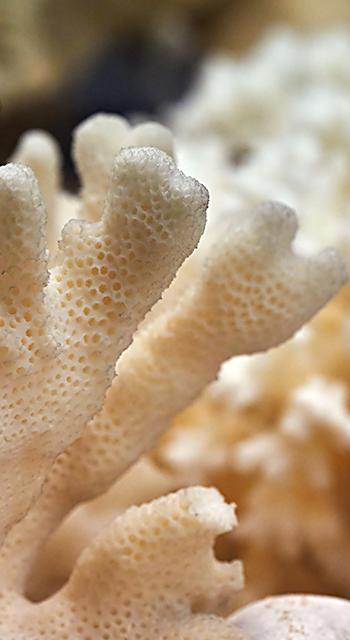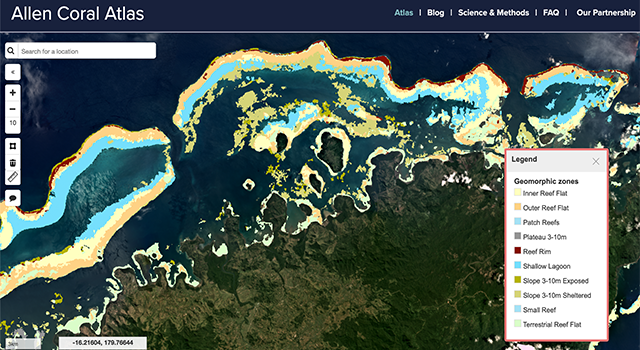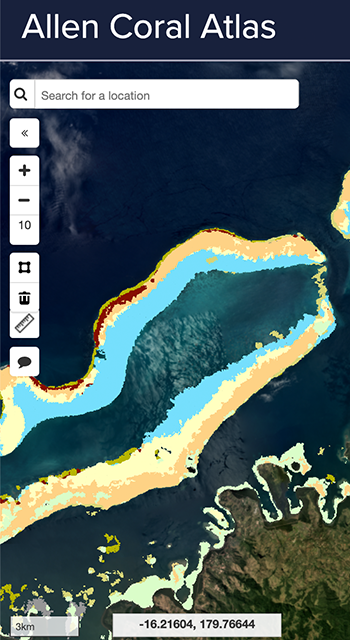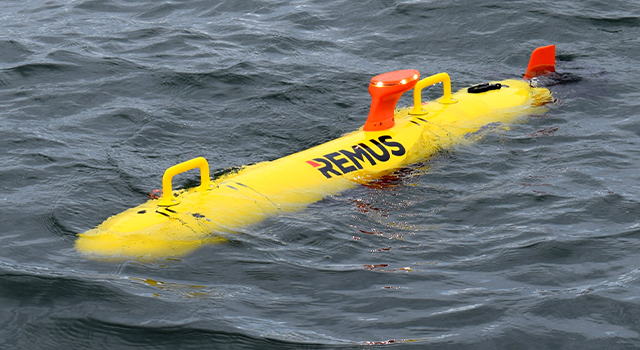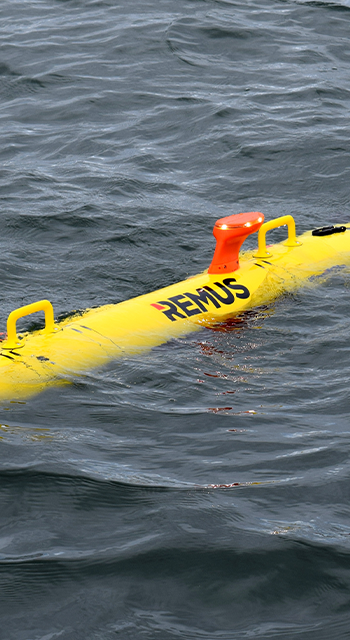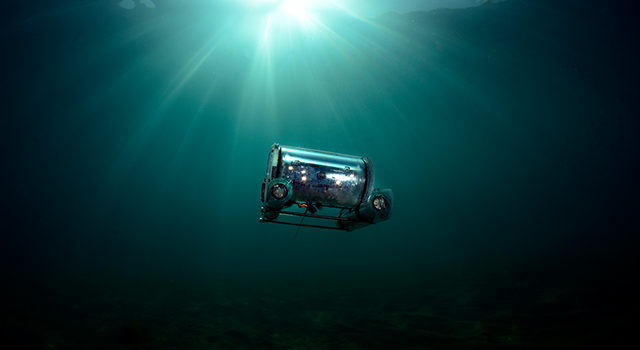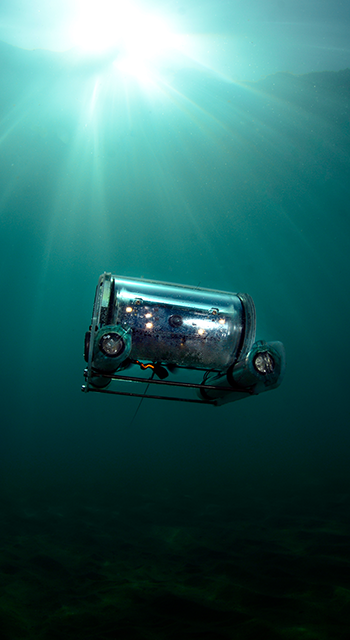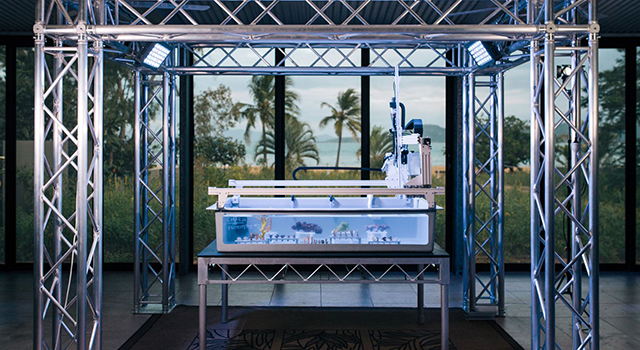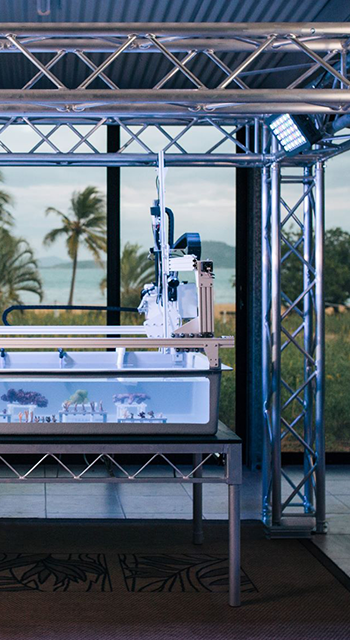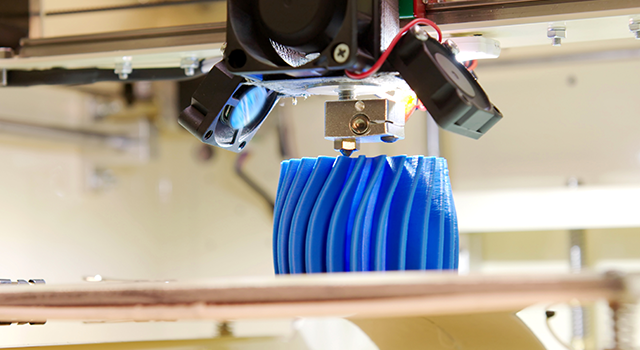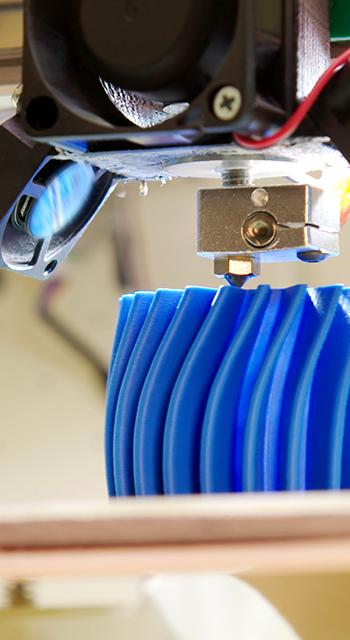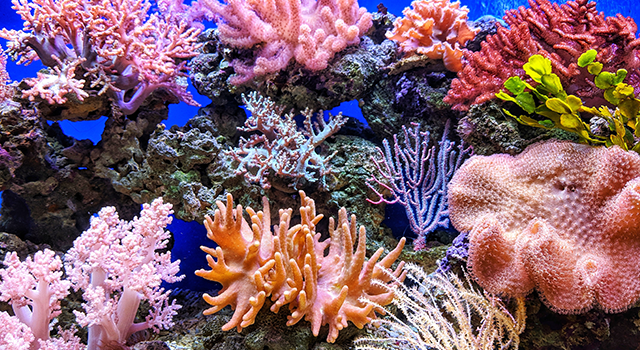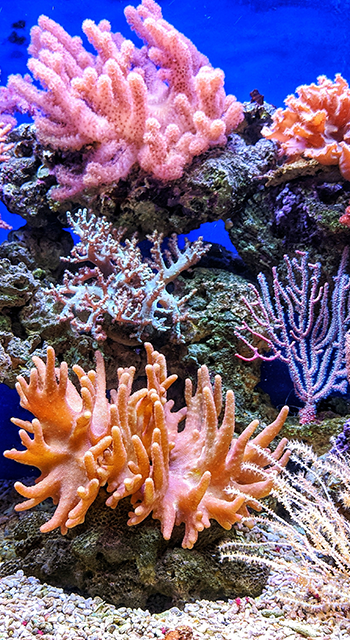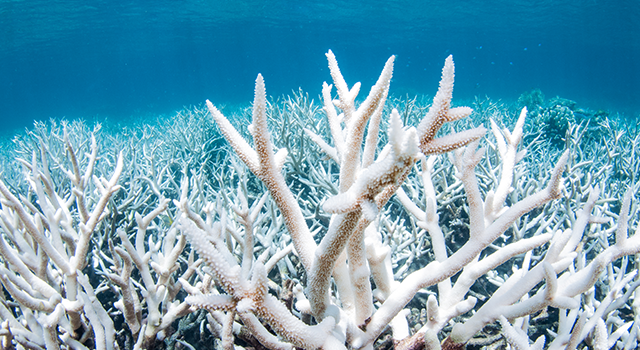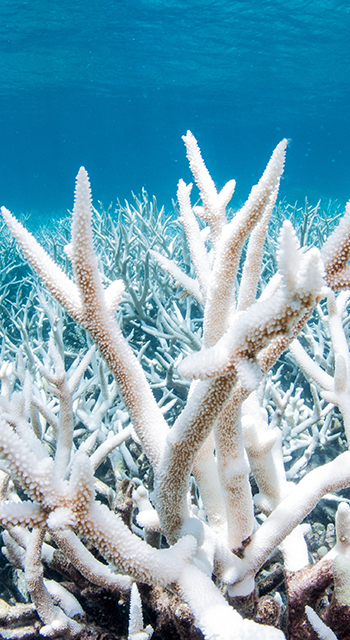Hundreds of millions of people rely on marine life and coral reefs to provide ecosystem services such as food and coastal protection. Climate change and other threats are putting devastating pressure on these marine ecosystems. Traditional conservation is no longer enough. Specific measures to support climate-resilient marine ecosystems are increasingly called for – and technology could play a role.
Innovation examples
Proven technologies
Frontier technologies
Horizon technologies
Boretti, A. and L. Rosa (2019). Reassessing the projections of the World Water Development Report. npj Clean Water, 2.
IPCC (2018). An IPCC Special Report on the impacts of global warming of 1.5°C above pre-industrial levels and related global greenhouse gas emission pathways, in the context of strengthening the global response to the threat of climate change, sustainable development, and efforts to eradicate poverty. Summary for Policymakers. Geneva: IPCC, WMO, UNEP. Available at: https://www.ipcc.ch/sr15/
IPO, UK (2021). Flood and coastal defences. Newport, UK: The Intellectual Property Office (IPO UK). Available at: https://assets.publishing.service.gov.uk/government/uploads/system/uploads/attachment_data/file/1031155/Flood-and-coastal-defences.pdf.
Dechezlepretre, A., S. Fankhauser, M. Glachant, J. Stoever and S. Touboul (2020). Invention and global diffusion of technologies for climate change adaptation: A patent analysis. Washington, DC: World Bank. Available at: https://openknowledge.worldbank.org/handle/10986/33883.
Vegt, H. van der, I. Iliev, Q. Tannock and S. Helm (2011). Patent landscape report on desalination technologies and the use of alternative energies for desalination. Geneva: World Intellectual Property Organization (WIPO). Available at: https://www.wipo.int/edocs/pubdocs/en/patents/948/wipo_pub_948_2.pdf.
IPOS (2019). Technology scan: Energy efficient desalination technologies. Intellectual Property Office of Singapore (IPOS). Available at: https://www.ipos.gov.sg/docs/default-source/default-document-library/tech-scan---energy-efficient-desalination-technologies.pdf
Conway, D., A. Dechezleprêtre, I. Haščič and N. Johnstone (2015). Invention and diffusion of water supply and water efficiency technologies: Insights from a global patent dataset. Water Economics and Policy, 01, 1550010.
Vegt, H. van der and I. Iliev (2012). Patent landscape report on membrane filtration and uv water treatment. Geneva: World Intellectual Property Organization (WIPO). Available at: https://www.wipo.int/publications/en/details.jsp?id=232.
WIPO (2019). Patent landscape report: Marine genetic resources. Geneva: World Intellectual Property Organization (WIPO). Available at: https://www.wipo.int/publications/en/details.jsp?id=4398&plang=EN.
IPCC (2019). IPCC special report on the ocean and cryosphere in a changing climate. Summary for policymakers. Geneva: IPCC, WMO, UNEP. available: https://www.ipcc.ch/srocc/download-report/
UNEP (2021). Adaptation Gap Report 2021: The gathering storm. Nairobi: United Nationals Environment Programme. available: https://www.unep.org/resources/adaptation-gap-report-2021
EIB (2021). EIB Climate Adaptation Plan. European Investment Bank (EIB). Available at: https://www.eib.org/en/publications/the-eib-climate-adaptation-plan [accessed October 2022].
Heinrich Böll Foundation (2021). 10 things to know about climate finance. Available at: https://issuu.com/heinrichbollfoundationnorthamerica/docs/hbs-10things2021-book?embed_cta=embed_badge&embed_context=embed&embed_domain=climatefundsupdate.org&utm_medium=referral&utm_source=climatefundsupdate.org [accessed October 2022].
Staudt, F., R. Gijsman, C. Ganal, F. Mielck, J. Wolbring, H.C. Hass, N. Goseberg, H. Schüttrumpf, T. Schlurmann and S. Schimmels (2021). The sustainability of beach nourishments: A review of nourishment and environmental monitoring practice. Journal of Coastal Conservation, 25(2), 34.
MMC (2005). Natural hazard mitigation saves: An independent study to assess the future savings from mitigation activities. Volume 1-Findings, conclusions, and recommendations. Washington, DC.: Multihazard Mitigation Council (MMC). Available at: https://www.nibs.org/resource/resmgr/MMC/hms_vol1.pdf.
Teutli-Hernández, C., J.A. Herrera-Silveira, D.J. Cisneros-de la Cruz and R. Román-Cuesta (2020). Mangrove ecological restoration guide: Lessons learned. Mainstreaming Wetlands into the Climate Agenda: A multi level approach (SWAMP). Bogor, Indonesia: CIFOR/CINVESTAV-IPN/UNAM-Sisal/PMC. Available at: https://www.cifor.org/publications/pdf_files/Books/2020-Guide-SWAMP.pdf.
Climate-ADAPT (2015). Adaptation or improvement of dikes and dams. The European Climate Adaptation Platform Climate-ADAPT. Available at: https://climate-adapt.eea.europa.eu/metadata/adaptation-options/adaptation-or-improvement-of-dikes-and-dams [accessed July 2022].
Climate-ADAPT (2015). Restoration and management of coastal wetlands. The European Climate Adaptation Platform Climate-ADAPT. Available at: https://climate-adapt.eea.europa.eu/metadata/adaptation-options/restoration-and-management-of-coastal-wetlands [accessed July 2022].
IPCC (2022). Working Group II Sixth Assessment Report. Impacts, adaptation and vulnerability. Summary for policymakers. Geneva: Intergovernmental Panel on Climate Change (IPCC). Available at: https://www.ipcc.ch/working-group/wg2/
Touma, D., S. Stevenson, D.L. Swain, D. Singh, D.A. Kalashnikov and X. Huang (2022). Climate change increases risk of extreme rainfall following wildfire in the western United States. Science Advances, 8(13), eabm0320.
UNHCR (2014). Planned relocation, disasters and climate change: consolidating good practices and preparing for the future. Sanremo, Italy: United Nations High Commissioner for Refugees (UNHCR). Available at: https://www.unhcr.org/54082cc69.pdf.
Bertule, M., L.R. Appelquist, J. Spensley, S.L.M. Trærup and P. Naswa (2018). Climate change adaptation technologies for water: A practitioner’s guide to adaptation technologies for increased water sector resilience. UNEP-DTU Partnership. Available at: https://backend.orbit.dtu.dk/ws/portalfiles/portal/145967791/CC_Adaptation_technologies_for_water_red.pdf.
UNESCO (2021). The United Nations World Water Development Report 2021: Valuing water. Paris: United Nations Educational, Scientific and Cultural Organization (UNESCO). Available at: www.
unwater.org/publications/un-world-water-development-report-2021 [accessed October 2022].
WRI (2019). 17 countries, home to one-quarter of the world's population, face extremely high water stress. World Resources Institute (WRI). Available at: https://www.wri.org/insights/17-countries-home-one-quarter-worlds-population-face-extremely-high-water-stress [accessed October 2022].
Angelakis, A., T. Asano, A. Bahri, B. Jiménez and G. Tchobanoglous (2018). Water reuse: From ancient to modern times and the future. Frontiers in Environmental Science, 6, 26.
Jones, E., M. van Vliet, M. Qadir and M. Bierkens (2021). Country level and gridded estimates of wastewater production, collection, treatment and reuse. Earth System Science Data, 13, 237–54.
World Bank (2021b). Scaling up water reuse: Why recycling our wastewater makes sense. Available at: https://blogs.worldbank.org/climatechange/scaling-water-reuse-why-recycling-our-wastewater-makes-sense [accessed October 2022].
Dillon, P., P. Stuyfzand, T. Grischek, M. Lluria, R.D.G. Pyne, R.C. Jain, J. Bear, J. Schwarz, W. Wang, E. Fernandez, C. Stefan, M. Pettenati, J. van der Gun, C. Sprenger, G. Massmann, B. R. Scanlon, J. Xanke, P. Jokela, Y. Zheng, R. Rossetto, M. Shamrukh, P. Pavelic, E. Murray, A. Ross, J.P. Bonilla Valverde, A. Palma Nava, N. Ansems, K. Posavec, K. Ha, R. Martin and M. Sapiano (2019). Sixty years of global progress in managed aquifer recharge. Hydrogeology Journal, 27(1), 1–30.
Abdel-Shafy, H. and M. Mansour (2013). Overview on water reuse in Egypt: Present and future. J. Sustainable Sanitation Practice, Vol. 14, 17-25.
Egypt Independent (2022). Egypt to become largest country in the world in water reuse. Available at: https://egyptindependent.com/egypt-to-become-largest-country-in-the-world-in-water-reuse-ministry/ [accessed October 2022].
Research and Markets (2022). Global water recycle and reuse technologies market 2022: Climate change and drought resilience compels adoption of water reuse. [online] available: https://www.globenewswire.com/en/news-release/2022/03/18/2405982/28124/en/Global-Water-Recycle-and-Reuse-Technologies-Market-2022-Climate-Change-and-Drought-Resilience-Compels-Adoption-of-Water-Reuse.html [accessed October 2022].
Padmanathan, P. (2022). How technology and entrepreneurship can quench our parched world. Available at: https://www.weforum.org/agenda/2022/06/technology-and-entrepreneurship-can-quench-our-parched-world/ [accessed October 2022].
Business Standard (2021). SC says NGT ban on water purifiers where TDS below 500 mg per litre. Available at: https://www.business-standard.com/article/current-affairs/sc-stays-ngt-ban-on-water-purifiers-where-tds-below-500-mg-per-litre-122030100625_1.html [accessed October 2022].
Curto, D., V. Franzitta, and A. Guercio (2021). A review of the water desalination technologies. Applied Sciences, 11(2).
C40 (2018). The future we don’t want: How climate change could impact the world’s greatest cities. Urban Climate Change Research Network (UCCRN). Available at: https://www.c40.org/wp-content/uploads/2021/08/1789_Future_We_Dont_Want_Report_1.4_hi-res_120618.original.pdf.
Nellie, D., M. van der Merwe and L. Dougan (2018). Cape of storms to come. Daily Maverick. Available at: https://features.dailymaverick.co.za/cape-of-storms-to-come/cape-of-storms-tocome-part-1.html [accessed October 2022].
Shi, L., L. Wang, H. Li, Y. Zhao, J. Wang, Y. Zhu and G. He (2022). Impact of residential water saving devices on urban water security: the case of Beijing, China. Environmental Science: Water Research & Technology, 8(2), 326–42.
Cominola, A., M. Giuliani, A. Castelletti, P. Fraternali, S. Herrera, J.C. Guardiola, J. Novak and A.-E. Rizzoli (2021). Long-term water conservation is fostered by smart meter-based feedback and digital user engagement. npj Clean Water, 4, 29.
Liemberger, R. and A. Wyatt (2018). Quantifying the global non-revenue water problem. Water Supply, 19(3), 831-837.
Hvilshoj, S. (2015). Reduction of non-revenue water around the world. International Water Association. Available at: https://iwa-network.org/reduction-of-non-revenue-water-around-the-world/#:~:text=Around%20the%20world%20we%20still,per%20cent%20non%2Drevenue%20water [accessed October 2022].
Oksen, P. and L. Favre (2020). Innovative technology in the Water, Sanitation and Hygiene (WASH) sector. Global challenges in focus. Geneva: World Intellectual Property Organization (WIPO). Available at: https://www.wipo.int/publications/en/details.jsp?id=4497&plang=EN.
OECD (2022b). OECD work in support of a sustainable ocean. Paris: Organisation for Economic Co-operation and Development (OECD). Available at: https://www.oecd.org/environment/2022-OECD-work-in-support-of-a-sustainable-ocean.pdf
NOAA (2022b). Ocean acidification. National Oceanic and Atmospheric Administration (NOAA). Available at: https://www.noaa.gov/education/resource-collections/ocean-coasts/ocean-acidification#:~:text=Because%20of%20human%2Ddriven%20increased,the%20ocean%20becomes%20more%20acidic [accessed August 2022].
GCRMN (2020). The sixth status of corals of the world: 2020 report. The Global Coral Reef Monitoring Network (GCRMN). Available at: https://gcrmn.net/2020-report/
Duarte, B., I. Martins, R. Rosa, A. Matos, M. Roleda, T. Reusch, A. Engelen, E. Serrao, G. Pearson, J. Marques, I. Caçador, C. Duarte and A. Jueterbock (2018). Climate change impacts on seagrass meadows and macroalgal forests: An integrative perspective on acclimation and adaptation potential. Frontiers in Marine Science, 5.
Foo, S.A. and G.P. Asner (2019). Scaling up coral reef restoration using remote sensing technology. Frontiers in Marine Science, 6.
GCRA (2022). Biorock. Global Coral Reef Alliance (GCRA). Available at: https://www.globalcoral.org/biorock-coral-reef-marine-habitat-restoration/ [accessed October 2022].
Dunic, J., C. Brown, R. Connolly, M. Turschwell and I. Côté (2021). Long‐term declines and recovery of meadow area across the world’s seagrass bioregions. Global Change Biology, 27.
Tan, Y.M., O. Dalby, G.A. Kendrick, J. Statton, E.A. Sinclair, M.W. Fraser, P.I. Macreadie, C.L. Gillies, R.A. Coleman, M. Waycott, K.-j. van Dijk, A. Vergés, J.D. Ross, M.L. Campbell, F.E. Matheson, E.L. Jackson, A.D. Irving, L.L. Govers, R.M. Connolly, I.M. McLeod, M.A. Rasheed, H. Kirkman, M.R. Flindt, T. Lange, A.D. Miller and C.D.H. Sherman (2020). Seagrass restoration is possible: Insights and lessons from Australia and New Zealand. Frontiers in Marine Science, 7.
Voolstra, C., D. Miller, M. Ragan, A. Hoffmann, O. Hoegh-Guldberg, D. Bourne, E. Ball, H. Ying, S. Foret, S. Takahashi, K. Weynberg, M. van Oppen, K. Morrow, C.X. Chan, N. Rosic, W. Leggat, S. Sprungala, M. Imelfort, G. Tyson, K. Kassahn, P. Lundgren, R. Beeden, T. Ravasi, M. Berumen, E. Abel and T. Fyffe (2015). The ReFuGe 2020 Consortium – using “omics” approaches to explore the adaptability and resilience of coral holobionts to environmental change. Frontiers in Marine Science, 2.
Than, K. (2020). Q&A: Making the case for mobile marine protected areas. Available at: https://earth.stanford.edu/news/qa-making-case-mobile-marine-protected-areas#gs.ekplbm [accessed October 2022].
